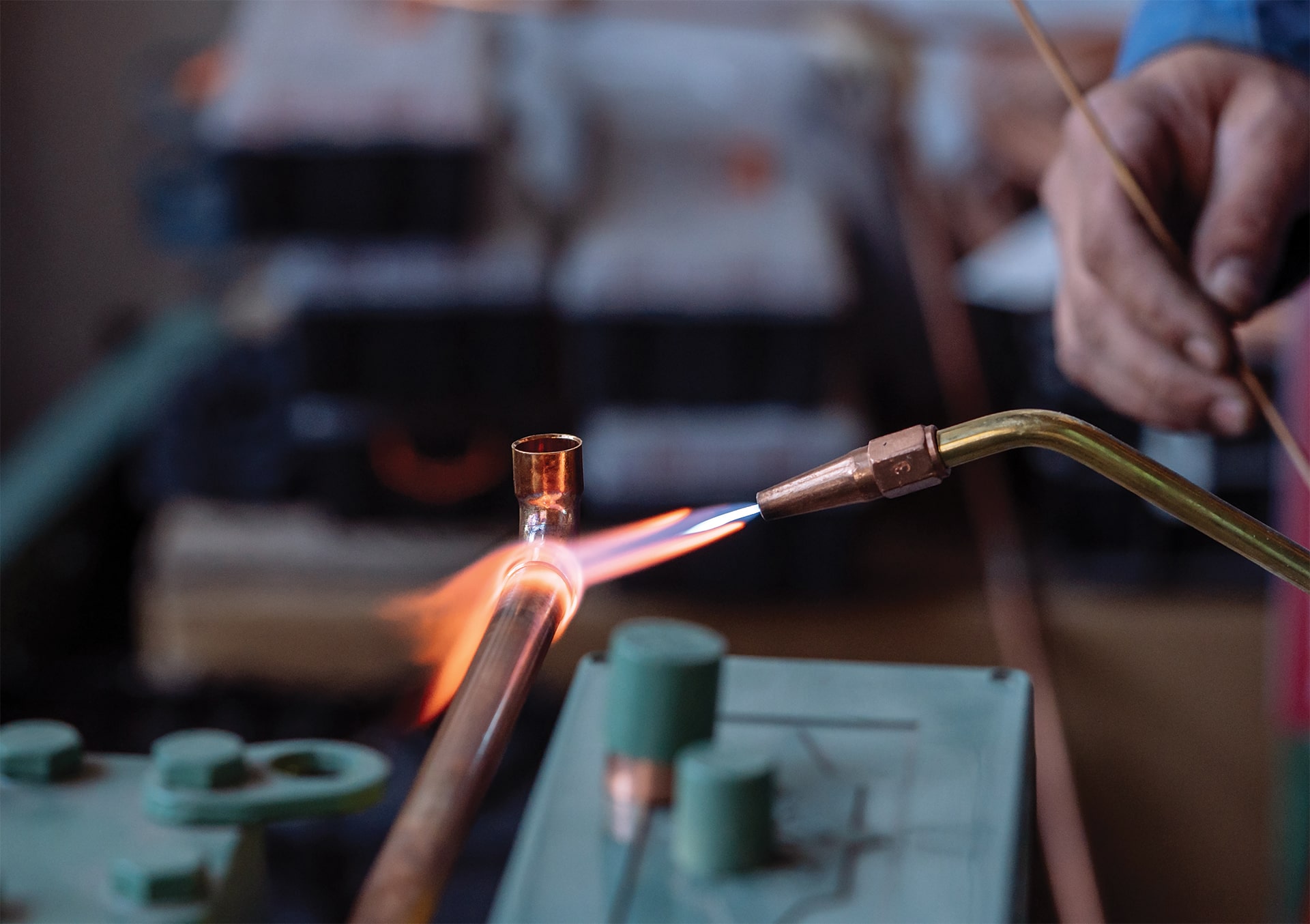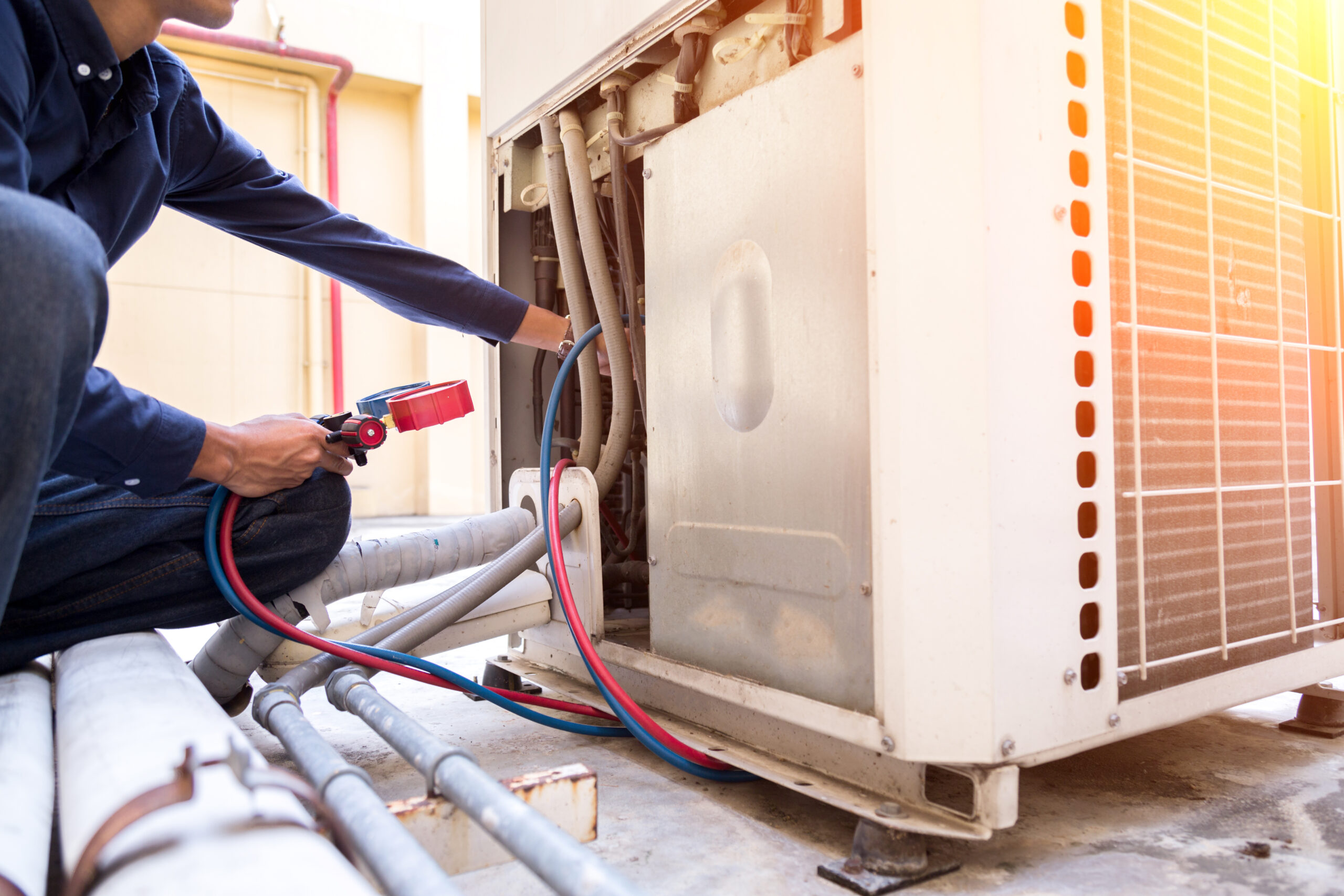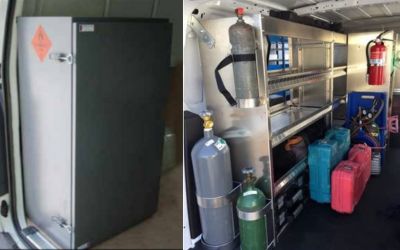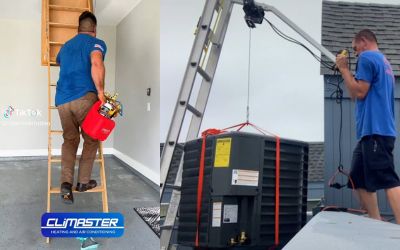Unfortunately, it is common for HVAC technicians to experience early backpain in their career. Trade occupations are associated with a high-risk of back pain, due to the physical demands of everyday work. For HVAC technicians, an everyday job may require anything from lifting heavy AC units up rooftops and attics, to crouching in tight spaces.
In this article, we’ll run through some of the best practices in HVAC:
- Lifts and cranes for rooftop work
- Roping for rooftop and attic work
- Switching to a lightweight brazing rig
- Switching to disposable nitrogen cylinders
- Lifting with the right technique
- Mobility training and stretching
Invest in a lift or crane for rooftop work
You may have seen those viral videos of technicians who carry air conditioning units up ladders. As convenient as it may seem, this is extremely dangerous and the risk of dropping the unit or falling off the ladder can have more serious consequences. If you work on rooftops and need to lift air conditioning units or compressors to the roof – invest in a ladder lift or crane. Whilst this can be a high upfront cost, it’s worth the lifetime cost of preventing serious injuries and expensive unit damage. A crane can also be rented out instead of purchased.
Did you know: Helicopters are sometimes used for transporting HVAC equipment to the top of skyscrapers!
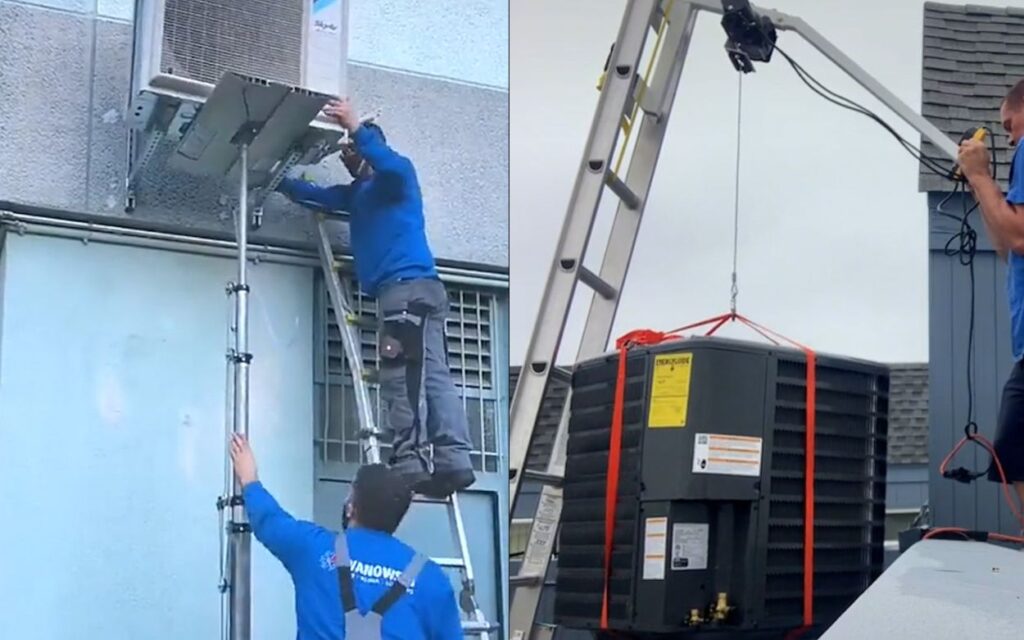
Use a reliable rope to hoist small tools and equipment
For lifting smaller equipment such as compressors, invest in a high-quality rope with carabiners on both ends. A rope can be used to lift equipment that cannot be carried comfortably in one arm.
Adrian from Reliable HVACR has shared a YouTube video on his rope set-up. This quality set-up uses a strong chain link for re-enforced strength.
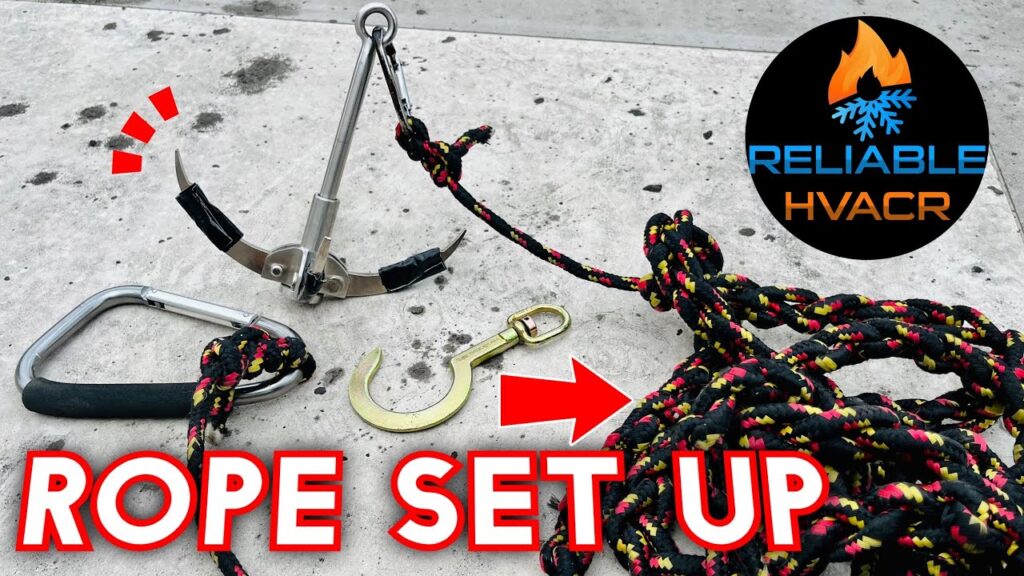
Switch to a lightweight brazing rig
Whilst heavy heat pumps, air conditioning units and other HVAC systems cannot be replaced with lightweight alternatives – some HVAC tools and tanks can be. Gas tanks are often one of the heaviest items that must be carried on site. These cylinders include refrigerants, nitrogen, oxygen and acetylene gas. Fortunately, there are now lightweight disposable options that are significantly lighter – weighing as little as 6 pounds. Whilst more expensive per cubic feet, compact disposable cylinders can help you save time in the field and prevent long-term back pain and injuries that can come from carrying heavy equipment up ladders and on the work site.
The Ambro Controls Oxyset Mobile Brazing System is a lightweight mobile brazing system that weights only 13.5lbs. Because it operates on disposable oxygen and map-pro cylinders, it’s a significantly lightweight alternative to a traditional oxy-acetylene kit. The Oxyset offers comparable performance to oxy-acetylene for brazing up to 1.5” copper pipes.
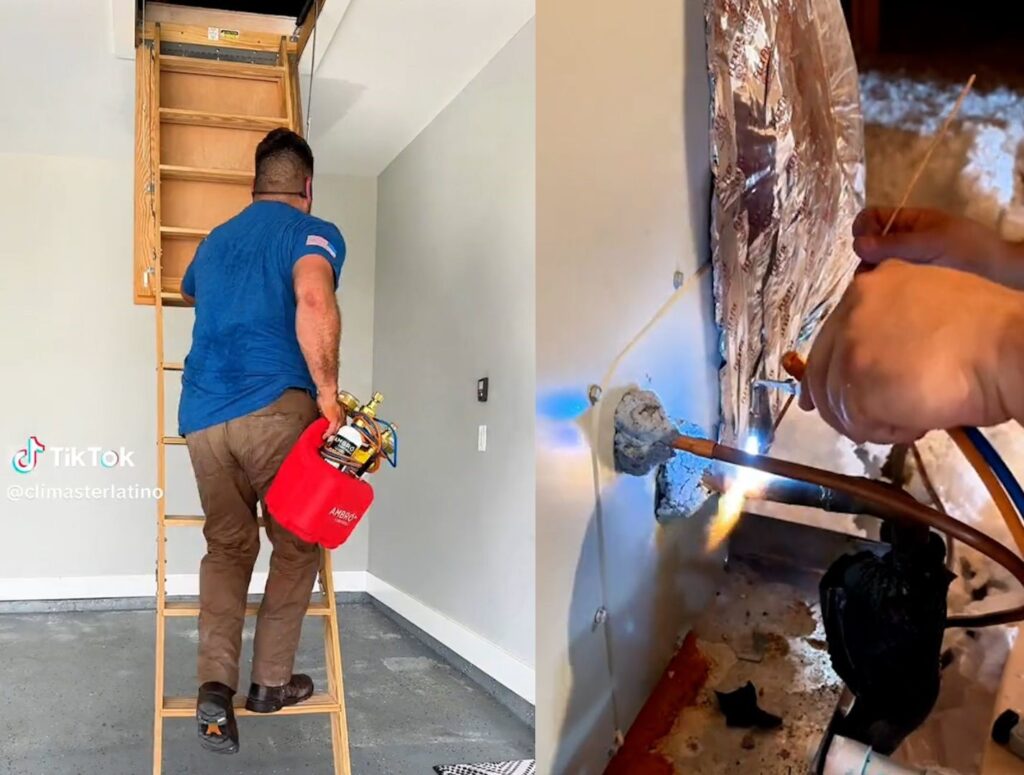
Switch to disposable nitrogen cylinders
Ambro Controls has also designed a lightweight disposable nitrogen cylinder (7.4ft3 of compressed nitrogen) that can be used for purging, brazing and testing small systems. The cylinder weighs approximately 6 pounds, making it super lightweight to carry on-site.
Above all, small tools and tanks can fit in backpacks – which can be easily carried up attics or rooftops. The Ambro Controls Oxyset and Nitrogen Cylinder all conveniently fit in the Oxyset backpack – making it an absolute breeze to carry on site.
Lift with the right technique
You can have all the fancy equipment in the world, but truth be told – it all starts with your technique, and this applies to preventing back injuries too! Here are some general tips to always keep in mind:
- Lift with your legs: When lifting heavy objects from the ground, your leg muscles should do the work – not your back. Bend your knees as if doing a squat and keep your back straight when picking up objects.
- Split the load with your apprentice: Work closely with your apprentice to carry heavy loads. If you’re working on your own, don’t be afraid to take the time to hoist or carry equipment bit by bit rather than carrying it across all at once.
- Use forearm forklift straps: Forearm straps are cheap and very hand for all sorts of technicians. This can be used to carry large and heavy items including refrigerators, water heaters and HVAC equipment.
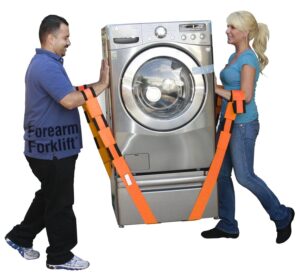
Mobility Training and Stretching
As exhausting work can be, it’s still important to keep fit all around – as they say, a healthy body will be able to handle work better and retain better muscle and bone strength with aging.
Your abdominal muscles, legs and backs are needed the most on the job, so make sure to include exercises such as squats and rows in your routine. If you’re already experiencing backpain, stretching can help relieve pain. Participating in yoga is a good way to incorporate a full body stretch and will also help maintain mobility.
